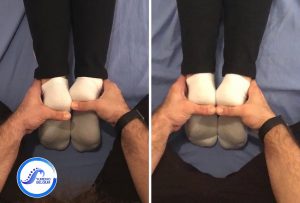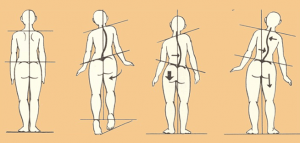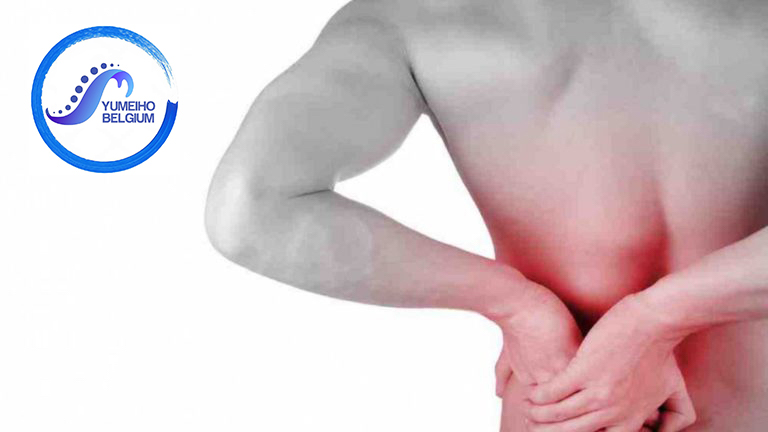Back Pain Solutions With Yumeiho Therapy
What is back pain?
According to Wikipedia:
Back pain, also known as backache, is pain felt in the back. The back is divided into neck pain (cervical), middle back pain (thoracic), lower back pain (lumbar) or coccydynia (tailbone or sacral pain) based on the segment affected. The lumbar area is the most common area affected. Episodes of back pain may be acute, sub-acute, or chronic depending on the duration. The pain may be characterized as a dull ache, shooting or piercing pain, or a burning sensation. Discomfort can radiate into the arms and hands as well as the legs or feet, and may include numbness or weakness in the legs and/or arms.
About the complexity of back pain
The majority of back pain is nonspecific with no identifiable causes. Common underlying mechanisms include degenerative or traumatic changes to the discs and facets joints, which can then cause secondary pain in the muscles, and nerves, and referred pain to the bones, joints and extremities. Diseases and inflammation of the gallbladder, pancreas, aorta, and kidneys may also cause referred pain in the back. Tumors of the vertebrae, neural tissues and adjacent structures can also manifest as back pain.
Back pain is common, with about nine out of ten adults experiencing it at some point in their life, and five out of ten working adults having it every year. Some estimate up to 95% of people will experience back pain at some point in their lifetime. It is the most common cause of chronic pain, and is a major contributor of missed work and disability. For most individuals, back pain is self-limiting.
Nonspecific
In as many as 90 percent of cases, no physiological causes or abnormalities on diagnostic tests can be found. Nonspecific back pain can be due to back strain/sprain. The cause is peripheral injury to muscle or ligaments. The patient may or may not recall the cause. The pain can present acutely but in some cases can persist, leading to chronic pain.
Chronic back pain in people with otherwise normal scans can result from central sensitization, where an initial injury causes a longer-lasting state of heightened sensitivity to pain. This persistent state maintains pain even after the initial injury has healed. Treatment of sensitization may involve low doses of anti-depressants and directed rehabilitation such as physical therapy.
Among the conditions that can be included here are two of the most common diseases of the spine:
- Scoliosisis a medical condition in which a person’s spine has a sideways curve. The curve is usually “S”- or “C”-shaped over three dimensions. In some, the degree of curve is stable, while in others, it increases over time. Mild scoliosis does not typically cause problems, but more severe cases can affect breathing and movement. Pain is usually present in adults, and can worsen with age.
The signs of scoliosis can include:
Uneven musculature on one side of the spine
Rib prominence or a prominent shoulder blade, caused by rotation of the rib cage in thoracic scoliosis
Uneven hips, arms, or leg lengths.
An estimated 65% of scoliosis cases are idiopathic, but this depends on who does the postural analysis.
- Kyphosisis an abnormally excessive convex curvature of the spine as it occurs in the thoracic region of the spine.
While most cases of kyphosis are mild and only require routine monitoring, serious cases can be debilitating. High degrees of kyphosis can cause severe pain and discomfort, breathing and digestion difficulties, cardiovascular irregularities, neurological compromise and, in the more severe cases, significantly shortened life spans.
We will talk about these 2 very common ailments and the Yumeiho approach in some future articles.
Spinal disc disease
Spinal disk disease occurs when the nucleus pulposus, a gel-like material in the inner core of the vertebral disc, ruptures. Rupturing of the nucleus pulposus ( which is by definition a herniated disc, and we will talk more about that) can lead to compression of nerve roots. Symptoms may be unilateral or bilateral, and correlate to the region of the spine affected. The most common region for spinal disk disease is at L4-L5 or L5-S1. The risk for lumbar disc disease is increased in overweight individuals due to the increased compressive force on the nucleus pulposus.
Severe spinal cord compression is considered a surgical emergency and requires decompression to preserve motor and sensory function.
Degenerative disease
Spondylosis, or degenerative arthritis of the spine, occurs when the intervertebral disc undergoes degenerative changes, causing the disc to fail at cushioning the vertebrae. There is an association between intervertebral disc space narrowing and lumbar spine pain. The space between the vertebrae becomes more narrow, resulting in compression and irritation of the nerves.
Spondylolithesis is the anterior shift of one vertebra compared to the neighboring vertebra. It is associated with age-related degenerative changes as well as trauma and congenital anomalies.
Spinal stenosis can occur in cases of severe spondylosis, spondylotheisis and age associated thickening of the ligamentum flavum. Spinal stenosis involves narrowing of the spinal canal and typically presents in patients greater than 60 years of age. Neurogenic claudication can occur in cases of severe lumbar spinal stenosis and presents with symptoms of pain in the lower back, buttock or leg that is worsened by standing and relieved by sitting.
Vertebral compression fractures occurs in 4 percent of patients presenting to primary care with low back pain. Risk factors include age, female gender, history of osteoporosis, and chronic glucocorticoid use. Fractures can occur due to trauma but in many cases can be asymptomatic.
Infection
Common infectious causes of back pain include osteomyelitis, septic diskitis, paraspinal abscess, and epidural abscess. Infectious causes that lead to back pain involve various structures surrounding the spine.
Osteomyelitis is the bacterial infection of the bone. Vertebral osteomyelitis is most commonly caused by staphylococci. Risk factors include skin infection, urinary tract infection, IV catheter use, IV drug use, previous endocarditis, and lung disease.
Spinal epidural abscess is also commonly caused by severe infection with bacteremia. Risk factors include recent epidural, IV drug use, or recent infection.
Cancer
Spread of cancer to the bone or spinal cord can lead to back pain. Bone is one of the most common sites of metastatic lesions. Patients typically have a history of malignancy. Common types of cancer that present with back pain include multiple myeloma, lymphoma, leukemia, spinal cord tumors, primary vertebral tumors, and prostate cancer. Back pain is present in 29% of patients with systemic cancer. Unlike other causes of back pain which commonly affect the lumbar spine, the thoracic spine is most commonly affected.
Autoimmune
Inflammatory arthritides such as ankylosing spondylitis, psoriatic arthritis, rheumatoid arthritis, and systemic lupus erythematosus can all cause varying levels of joint destruction. Among the inflammatory arthritides, ankylosing spondylitis is most closely associated with back pain due to the inflammatory destruction of the bony components of the spine. Ankylosing spondylitis is common in young men and presents with a range of possible symptoms such as uveitis, psoriasis, and inflammatory bowel disease.
Diagnosis
The initial assessment of back pain consists of a questionnaire of the history of complaints and physical examination of patients.
Important characterizing features of the back pain include location, duration, severity, history of prior back pain, and possible trauma. Other important components of the patient history include age, physical trauma, prior history of cancer, fever, weight loss, urinary incontinence, progressive weakness, or expanding sensory changes, which can elicit red flags indicating a medically urgent condition.
Physical examination of the back should assess for posture and deformities. Pain elicited by palpating certain structures may be helpful in localizing the affected area.
Also, on this occasion there may be indications that although they are known by patients, they do not correlate them with back pain, and in most cases treat them incorrectly.
An example of this is the difference in the length of the lower limbs, which is present (depending on different sources) in at least 85% of the population.
The most common method of “treatment” is the application of insoles, which in addition to not treating the effect, often aggravates the cause. We will also talk about that in a future article.

What is Yumeiho®?
Yumeiho® is a therapeutic method based on manual actions performed on the entire human body for maintaining or improving health; it includes about 100 maneuvers performed on the entire patient’s body.
The Yumeiho® therapy consists of the methodical application of a complex set of manual procedures and physical exercises meant to restore the functional balance of the human organism. Thus, a diverse range of disorders that may cause both acute and chronic diseases is eliminated or ameliorated.
Although Yumeiho® is a method designed to be mainly preventively applied, it is still called „therapy” due to the fact its main purpose is treating or reducing the causes of functional disorders which, in time, may result in chronic sufferings.
Also, the Yumeiho® therapy can be applied in order to prevent or to slow down the progress of already existing sufferings.

Yumeiho® point of view abot back pain
The causes of back pain most often involve a wrong posture. The muscles, joints, ligaments and tendons will function incorrectly in the event of a defective posture. Yumeiho® is about posture recovery, body symmetry and freedom of movement. It restores the balance of the spine and corrects the position of the center of gravity.
Yumeiho® is a non-invasive, hands-on health care discipline that focuses on the neuro-musculoskeletal system. It has a manual only approach and does not involve needles, medication, oils, creams or anything else…
Physical examination is a must for every session of Yumeiho®. It doesn’t matter if it is the first session, the 10th session or 1 year of work, each Yumeiho® session will start with a postural analysis and a set of questions about the general state of health.
The manual therapeutic procedures applied for prophylactic or corrective purposes within the Yumeiho® therapy consist of osteo-articular manipulation and mobilization techniques; passive myo-articular gymnastics; point-therapy procedures; special massage techniques and procedures; stretching elements (stretches, elongations); methods of posture correction and balancing; exercises to optimize, balance and harmonize the biomechanics of musculoskeletal system, the spine and or the upper and lower limbs.
Patients with uncomplicated back pain should be encouraged to remain active and return to normal activities.
The management goals when treating back pain are to achieve maximal reduction in pain intensity as rapidly as possible, to restore the individual’s ability to function in everyday activities, to help the patient cope with residual pain, to assess for side-effects of therapy, and to facilitate the patient’s passage through the legal and socioeconomic impediments to recovery.
By treating the cause and not the effect, and treating each patient in a unique way, Yumeiho® has proven to be an extremely useful therapy in treating back pain with nonspecific causes.
Also, through the unique way of working and understanding the mechanisms of the body, Yumeiho® has proven to be useful in cases of spinal disc disease and degenerative disease.
Unlike other so-called methods, Yumeiho® does not heal!
After a Yumeiho® session you will understand what caused your problem and only together with you, the therapist will establish a treatment schedule for you to be in a shape that will allow you to continue enjoying life, without pain.



Thank you for the information. Welcome to Hombeek. It looks hopefull to have the possibility of an alternative method of pain reliëf in out village. I’ll definitely try it as soon as I can.
Hello! As soon as we can open again, we will announce this on the site and on the Facebook page, Yumeiho Belgium.